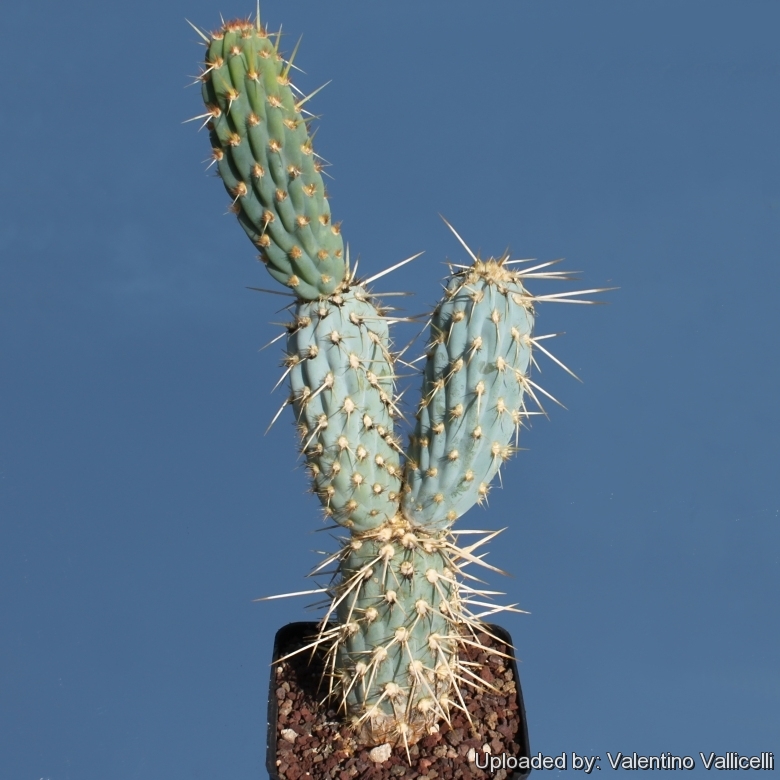
Miqueliopuntia miquelii Photo by: Valentino Vallicelli
Synonyms:
See all synonyms of Miqueliopuntia miquelii
Common Names include:
SPANISH (Español): Tunilla, Tuna de Miguel
Description: Miqueliopuntia miqueliiSN|4177]]SN|4177]] is the only species comprised in the genus Miqueliopuntia. . It is an uncommon many-branched, upright, bushy, opuntioid cactus , with elongated cylindric bluish joints from Chile, forming large thickets 1-1.5 m high and 2 to 5 meters wide.
Derivation of specific name. The specific epithet honors Dr. Friedrich Anton Wilhelm Miquel (1818–1871), Dutch physician and botanist, director of the botanical gardens of Rotterdam, then Amsterdam, and finally Utrecht.
Stems: Cylindrical, much branched, usually less than 1 meter high, but occasionally 1.5 meters high, with numerous lateral branches. Old branches bluish, with low tubercles sometimes 2 cm long; young joints bright green, with high tubercles flattened laterally. The segments, often arising near the tips of older segments, are rather short and clearly jointed, stout, 7-20 cm long, 3-6 cm in diameter.
Areoles: up to 60 i neach joint, circular, when young filled with white wool, in age somewhat elevated.
Leaves: Minute, 2 to 3 mm long, early deciduous.
Spines: Tardily developing on the areoles, but formidable on old branches, needle-like, very unequal, in clusters of 8-16 or more, the longest ones nearly 10 cm long, yellowish to dark brown, whitish or greysh in age.
Glochids: Numerous, brownish, caducous, 4-8 millimeters long and usually found in the upper part of the areoles.
Flowers: Large nearly white to pink, borne near the stem tips, not opening fully, rather variable in length, up to 8 cm long including the ovary. Tepals broad, apiculate, 2 to 2.5 cm. long. Filaments rose-colored. Pericarpel strongly tuberculate with areoles filled with numerous brown bristly glochids and subtended by minute leaves. Style white; stigma-lobes green.
Blooming season: Flowers only at adult stage often after decades, it is said of plants that have not done any flowers for the first 50 years.
Fruits: Pale green to whitish, spherical to elongated and covered with bristly spines.
Seeds: Variable-shaped, yellowish white to ocher and 3.5 to 5 millimeters long.
Bibliography: Major references and further lectures
1) Hunt, D., Taylor, N. and Charles, G. “The New Cactus Lexicon.” dh Books, Milborne Port, UK. 2006.
2) N. L. Britton, J. N. Rose: “The Cactaceae. Descriptions and Illustrations of Plants of the Cactus Family.” Vol I, The Carnegie Institution of Washington, Washington 1919
3) Anderson, E. F. “The cactus family” [lists as O. "sulfurea" G. Don]. 2001.
4) Backeberg, C. “Die Cactaceae.” 412–413.1958.
5) Backeberg, C. “Das Kakteen Lexikon.” 331–332.1977.
6) Faundez, L., Saldivia, P. & Walter, H.E. 2013. Miqueliopuntia miquelii. The IUCN Red List of Threatened Species 2013: e.T151986A584148. http://dx.doi.org/10.2305/IUCN.UK.2013-1.RLTS.T151986A584148.en. Downloaded on 16 February 2016.
7) “Carnegie Institution of Washington Publication”, Volume 248, Part 1 Carnegie Institution of Washington, 1919
8) Clive Innes “Complete Handbook of Cacti and Succulents” Van Nostrand Reinhold Company, 01 December 1981
9) Urs Eggli, Leonard E. Newton “Etymological Dictionary of Succulent Plant Names” Springer Science & Business Media, 29 June 2013
10) Friedrich Ritter “Kakteen in Südamerika: Ergebnisse meiner 20-jährigen Feldforschung.” volume 3, 1980
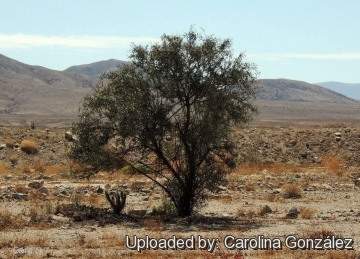 In habitat in the shade of a small tree at north of Caldera. Chile. Photo by: Carolina González
In habitat in the shade of a small tree at north of Caldera. Chile. Photo by: Carolina González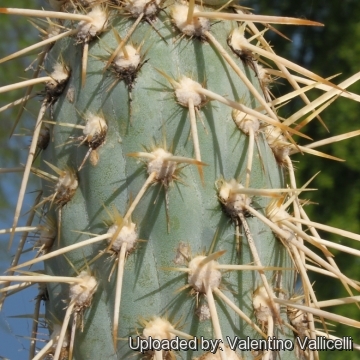 Miqueliopuntia miquelii Photo by: Valentino Vallicelli
Miqueliopuntia miquelii Photo by: Valentino Vallicelli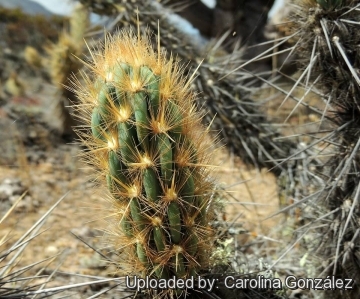 Cladode. South of caldera, Chile. Photo by: Carolina González
Cladode. South of caldera, Chile. Photo by: Carolina González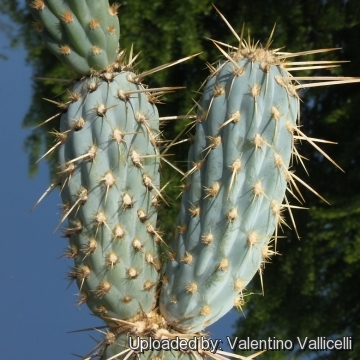 Miqueliopuntia miquelii Photo by: Valentino Vallicelli
Miqueliopuntia miquelii Photo by: Valentino Vallicelli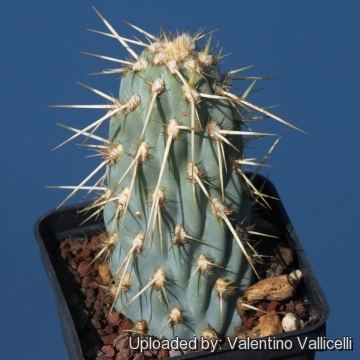 Miqueliopuntia miquelii Photo by: Valentino Vallicelli
Miqueliopuntia miquelii Photo by: Valentino Vallicelli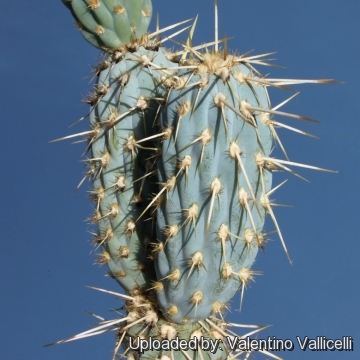 Miqueliopuntia miquelii Photo by: Valentino Vallicelli
Miqueliopuntia miquelii Photo by: Valentino Vallicelli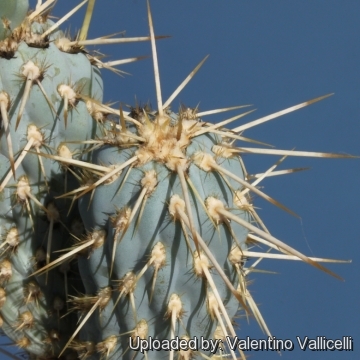 Miqueliopuntia miquelii Photo by: Valentino Vallicelli
Miqueliopuntia miquelii Photo by: Valentino VallicelliSend a photo of this plant.The gallery now contains thousands of pictures, however it is possible to do even more. We are, of course, seeking photos of species not yet shown in the gallery but not only that, we are also looking for better pictures than those already present.
Read More... Cultivation and Propagation: This species needs moderate watering during the growing season; keep dry in winter. It requires a very drained and mineral potting mix and a full sun exposure.
Propagation: Seeds are seldom available and extremely difficult to germinate. Best reproduced by cutting.

















